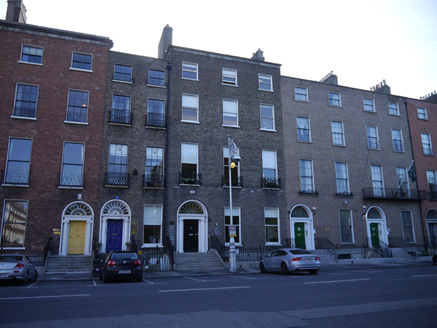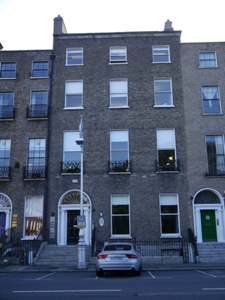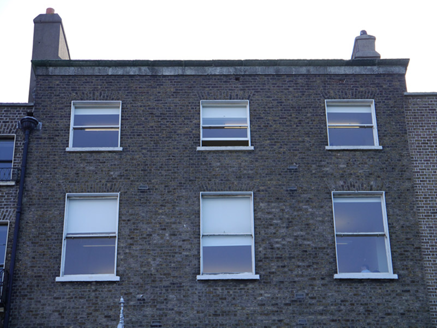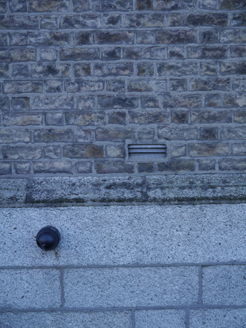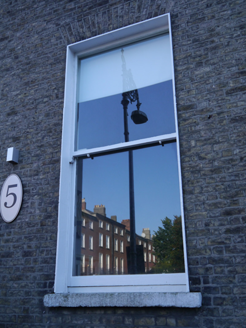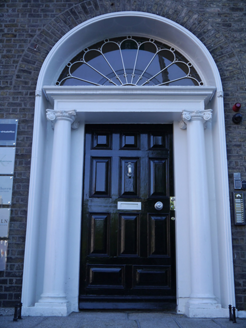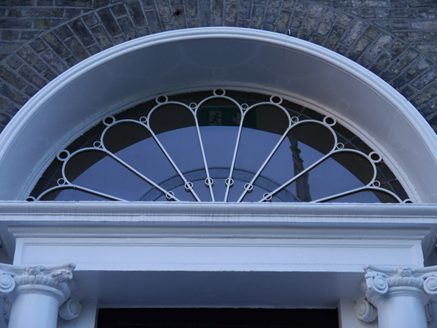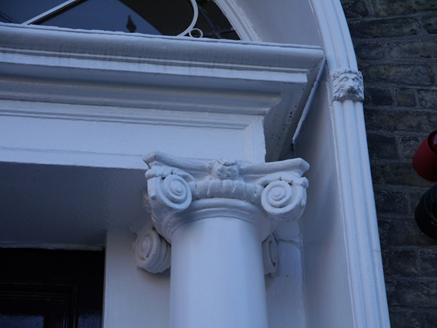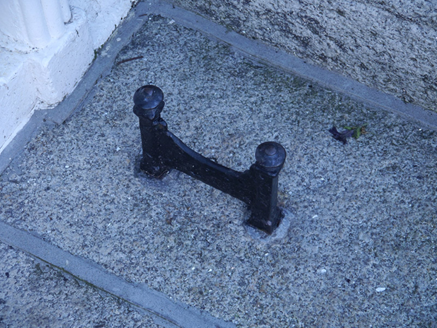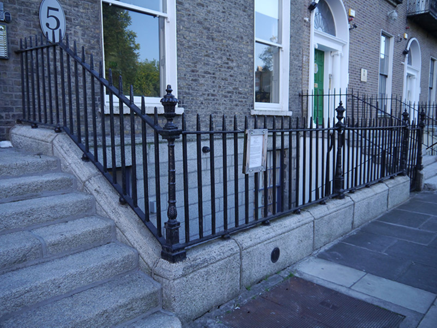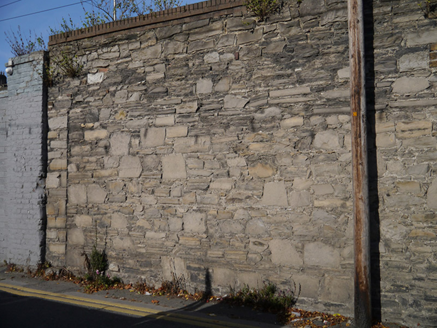Survey Data
Reg No
50930116
Rating
Regional
Categories of Special Interest
Architectural, Artistic
Original Use
House
In Use As
Office
Date
1815 - 1825
Coordinates
316598, 233056
Date Recorded
24/09/2015
Date Updated
--/--/--
Description
Attached three-bay four-storey over basement former townhouse, built c. 1820, now in use as offices. Gabled mansard-style roof, concealed by ashlar granite parapet with moulded cornice and blocking course. Shouldered rendered chimneystacks to party walls, with largely replacement clay pots. Parapet gutters with cast-iron hopper and downpipe to north side. Buff brick walling laid in Flemish bond over ashlar granite walling to basement beneath granite plinth course. Square-headed window openings with brick voussoirs, patent reveals and masonry sills, granite surrounds to basement. Cast-iron balconettes to first floor openings. Largely one-over-one replacement sliding timber sash windows with ogee horns, six-over-six to basement without horns. Round-headed door opening with brick voussoirs, moulded reveals with lion-headed impost stops and recessed rendered surround containing a prostyle portico with panelled frieze and moulded cornice carried on Scamozzian-Ionic columns over plinth stops, petal fanlight and raised-and-field timber panelled door with replacement furniture. Granite entrance platform with cast-iron boot scrapers, approached by seven granite steps flanked by iron railings with decorative cast-iron corner posts on granite plinth, enclosing basement to south-side. Coal-hole cover to pavement. Full-height red brick extension abutting to south side of rear (east) elevation, abutted by a steel escape-stair. Random limestone rubble wall to eastern boundary on Lad Lane with machined red brick coping.
Appraisal
Faced in buff Dolphin’s Barn brickwork Nos. 4-7 (50930115-8) are distinguished from the dominant red brick frontages, whilst the broad three-bay front of No. 5 is exceptional in the Square (along with No. 35 to the south; 50930228). Although its interior was more or less gutted, the property forms part of a relatively intact late-Georgian street, No. 5 diversifies the character of the streetscape. Laid out in 1791 by the surveyors J & P Roe, Fitzwilliam Square was the last of the city’s Georgian squares to be completed. Development was staggered, progressing slowly until after the Napoleonic Wars, with the vast majority of houses on the eastern side of the square completed between 1816-22. Although largely homogeneous in character and form, the subtle variations between terraces are indicative of the speculative nature of the Square’s development.
